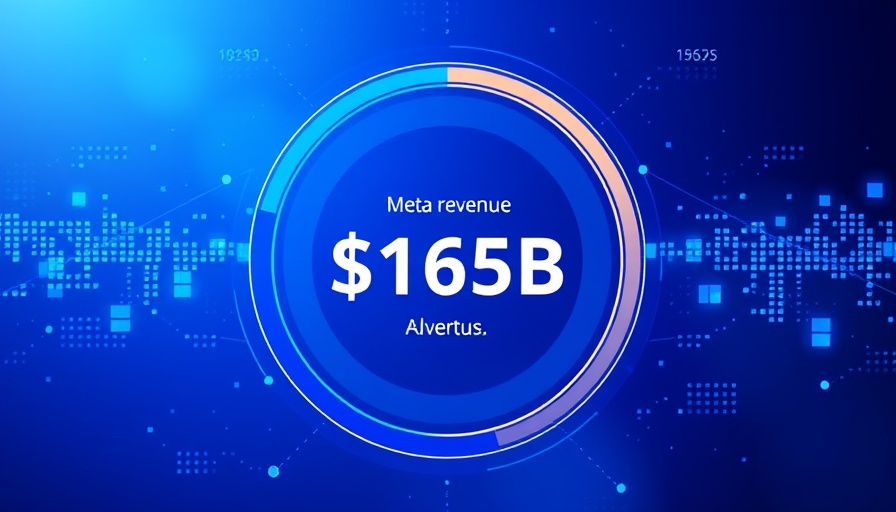
The Dominance of Meta's Ad Revenue: A Financial Overview
Meta Platforms, Inc., the tech giant headquartered in Menlo Park, California, has made headlines for its significant dominance in the digital advertising space. Recent statistics highlight that almost 98% of Meta's revenue comes from ad sales on platforms like Facebook, Instagram, and WhatsApp. With over 3 billion active users, it’s clear why Meta has positioned itself as a titan in the advertising industry.
Understanding the Landscape: Breaking Down Meta's Income Sources
While Meta boasts several projects, such as the Quest VR headsets and Ray-Ban smart glasses, the disproportionate scale of its ad revenue overshadow its other ventures. For many business owners, understanding this imbalance is vital. It reveals the essential focus on digital marketing strategies while considering investments in auxiliary technologies. With ad revenues reaching billions, Meta's advertising networks have proven more lucrative than its hardware product lines, which many see as the future of tech innovation.
Why Meta's Ad Business Stands Out: Key Insights
North America remains Meta’s most lucrative market, accounting for a significant share of its advertising income. As entrepreneurs strive for growth, understanding the geographic breakdown of Meta's revenue can provide insights into where to allocate marketing budgets effectively. For example, businesses targeting demographics in North America could see better returns by leveraging Meta's platforms, despite the competition.
Trends in Digital Advertising: The Future of Meta
Looking ahead, the landscape of digital advertising is changing. As more competitors enter the market, Meta faces challenges to maintain its advertising supremacy. Future predictions suggest that with advancements in AI and machine learning, businesses, including Meta, may develop more personalized advertising strategies, tailoring them to individual user preferences. This approach could increase engagement rates and, consequently, revenue.
Counterarguments: Examining Risks and Challenges
While Meta's advertising model thrives, some experts point to potential risks associated with such high reliance on ad revenue. Regulatory scrutiny has been increasing due to privacy concerns, which could undermine Meta's business model if stringent laws emerge. Additionally, shifts in consumer behavior, particularly among younger users shifting to emerging platforms like TikTok and Snapchat, could dilute Meta's market presence. For business owners, keeping a pulse on these trends is crucial for sustaining competitive advantage.
Creating Effective Business Strategies: What This Means for You
As business owners, especially those in consultancy or coaching roles, understanding Meta’s revenue framework offers multiple insights. It encourages developing marketing strategies that prioritize digital platforms while considering diversified revenue streams. This knowledge equips businesses to make informed decisions about where to invest their advertising budget, potentially boosting their visibility and client acquisition efforts.
Conclusion: Harnessing the Power of Insights
To navigate the digital advertising landscape effectively, it’s essential for business owners to analyze Meta's financial structure and explore how to integrate similar strategies into their own models. Meta's nearly monopolistic dominance signifies that the ad business is both lucrative and competitive. Therefore, employing tools to measure and optimize your online presence can harness the potential for growth in a constantly changing market.
If you’re looking to ramp up your marketing strategy and enhance your business growth, consider leveraging these insights into your planning. Engaging with Meta's platforms effectively can lead to significant returns on your investments.
 Add Row
Add Row  Add
Add 






Write A Comment